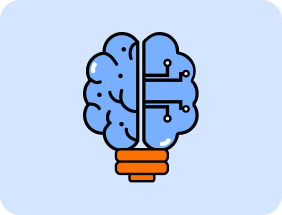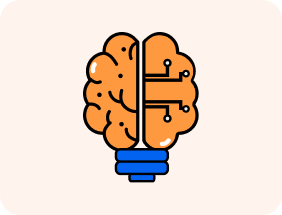What is Holistic Learning, and How YMetaconnect Plays a Great Role in it?
Holistic learning means focusing on the complete growth of a student, mind, emotions, and life skills, not just memorizing facts. It helps learners develop thinking abilities, social skills, creativity, and self-awareness, which are essential for success in the real world. In today’s education, where distractions are common, holistic development matters more than ever.
With the help of metacognition digital tools like YMetaconnect, students can use reflection-based learning to build lasting knowledge and confidence. Tools like the RAR tool (Review–Action–Reflection) and AI tools for self-directed learning encourage active thinking and personal growth.
These tools for reflective learning help students stay motivated, improve understanding, and prepare for future challenges in both education and life.
What is Holistic Learning?
Holistic learning is an approach that focuses on developing the whole person, not just their academic knowledge but also their emotional, social, and thinking skills. Instead of only memorizing facts or passing exams, holistic learning encourages students to grow in all areas of life. It helps them become confident, reflective, and capable individuals who can apply their knowledge in real-world situations.
In holistic learning, students are not passive receivers of information. They actively take part in their learning process, reflect on their progress, and learn to manage their thoughts, emotions, and behaviors. This approach values personal growth, emotional well-being, creativity, and problem-solving alongside academic success.
Platforms like YMetaconnect support holistic learning by offering tools that help students think about their thinking (metacognition), set goals, track progress, and reflect on their learning journey. Through interactive activities and feedback, learners become more self-aware, motivated, and equipped for lifelong learning.
Why Holistic Learning Matters in Modern Education?
In today’s fast-changing world, education needs to go beyond traditional teaching methods. Success is no longer measured only by exam results but by a student’s ability to adapt, solve problems, and work well with others. This is where holistic development becomes essential.
Holistic learning helps students build emotional intelligence, communication skills, and critical thinking—skills that are highly valued in both higher education and the workplace. It reduces stress, increases motivation, and fosters a love for learning.
With the help of AI tools for self-directed learning and tools for reflective learning like YMetaconnect’s RAR tool, students can practice reflection, decision-making, and continuous improvement. This prepares them for future careers, personal success, and meaningful lifelong learning.
Key Elements of Holistic Learning
Holistic learning is about nurturing the whole student, emotionally, socially, and intellectually, so they can thrive not just in exams, but in real life too. Unlike traditional learning, which focuses mostly on academic content, holistic development focuses on creating well-rounded individuals who can think critically, reflect on their learning, and handle life’s challenges confidently.
1. Emotional, Social, and Cognitive Growth
Holistic learning supports the development of emotional intelligence, social skills, and strong thinking abilities. Emotional growth means helping students manage stress, build confidence, and stay motivated.
Social growth helps them work in teams, communicate clearly, and show empathy. Cognitive growth means improving how they think, solve problems, and apply knowledge.
Digital platforms like YMetaconnect play a big role in this process by offering structured activities that help students build these three types of skills together.
With tools like the RAR tool (Review–Action–Reflection), students can reflect on how they feel, what they’ve learned, and how they interact with others, bringing emotional, social, and cognitive development into one learning journey.
2. Reflection and Self-Awareness
One of the most powerful parts of holistic development is the habit of reflection. Reflection encourages students to pause, think about what they’ve done, and learn from it.
YMetaconnect’s tools for reflective learning guide students to reflect after every learning session, which helps them become more self-aware.
Through simple questions like:
What did I learn?
How did I feel?
What could I improve?
students begin to take control of their own learning. This is how metacognition digital tools turn ordinary studying into active learning.
3. Skills for Real-World Success
The goal of holistic learning is not just academic success but skills for real-world success. In the 21st century, students need more than just knowledge. They need to think critically, solve problems, adapt to change, and work with others.
By combining AI tools for self-directed learning, reflection, and skill-building activities, YMetaconnect helps students gain lifelong learning habits. This makes them better prepared for future careers, personal challenges, and continuous growth beyond the classroom.
How YMetaconnect Supports Holistic Learning?
In the world of modern education, learning is no longer just about memorizing facts or passing exams. To succeed in life and future careers, learners need to grow emotionally, socially, and cognitively.
This is where YMetaconnect plays a powerful role by offering tools and strategies that promote holistic learning, helping students become not just better learners but better thinkers, communicators, and decision-makers.
YMetaconnect’s Approach to Holistic Learning
YMetaconnect is designed to move beyond traditional study methods. It focuses on nurturing the whole learner by combining AI tools for self-directed learning, reflective practice, and personalized feedback.
Instead of simply providing online content, YMetaconnect offers interactive tools that help learners build essential life skills such as problem-solving, communication, teamwork, creativity, and emotional intelligence.
The platform is built around the idea that real growth happens when learners reflect on their learning process, assess their progress, and actively make changes. This encourages continuous improvement, not just in academic knowledge but in personal development too.
YMetaconnect’s learning environment is supportive, engaging, and inclusive, making it suitable for a wide variety of learners, including those with diverse learning styles and needs.
The Role of RAR (Review–Action–Reflection) in Holistic Growth
One of the core strengths of YMetaconnect is its RAR tool—which stands for Review–Action–Reflection. This tool is central to promoting reflective learning and metacognitive development.
Here’s how it works:
Review:
Learners start by reviewing what they already know and identifying gaps in their understanding. This self-check process helps students become aware of their starting point and areas of improvement.
Action:
Next, students engage in an activity, assignment, or learning task. This could be anything from solving problems, writing a reflection, creating a project, or even delivering a presentation.
Reflection:
After completing the task, students reflect on what went well, what could be improved, and how they can apply this learning in the future.
The RAR cycle builds essential metacognitive learning skills, helping learners think about their own thinking, which leads to deeper understanding, better retention, and smarter study habits.
This simple yet powerful tool makes learning active rather than passive and is one of the reasons why YMetaconnect stands out among modern tools for reflective learning.
How SIMD (Self-Instructional Metacognitive Development) Builds Lifelong Learning?
Another powerful feature of YMetaconnect is SIMD—short for Self-Instructional Metacognitive Development. This is an innovative, AI-driven learning method that teaches students how to learn, not just what to learn.
The SIMD tool includes six structured modules that guide learners through:
Learning Strategy Inventory: Understand their personal learning styles.
Metacognitive Ability Assessment: Assess their current thinking and learning habits.
Goal Setting and Timetable Dashboard: Set SMART learning goals and organize their study plans.
Exam and Assignment Wrapper: Plan, execute, and reflect on academic tasks.
Daily Learning Journal & Self-Regulation Tracker: Build daily habits of reflection and progress tracking.
Comprehensive Self-Regulation Learning Template: Develop lifelong self-monitoring and learning routines.
Through SIMD, learners practice setting goals, monitoring their progress, and adjusting their strategies. This cycle of plan–do–reflect supports the development of lifelong learning skills, making students independent, motivated, and adaptable in any learning or work environment.
With the help of metacognition digital tools like SIMD and RAR, YMetaconnect turns every learner into a self-regulated learner who not only absorbs knowledge but also knows how to apply it meaningfully in real life.
By combining AI guidance, personalized feedback, and structured reflective activities, YMetaconnect ensures that learning is holistic, engaging, and future-ready, helping students, mentors, and institutions build the skills that matter most in the 21st century.
Key Features That Foster Holistic Development on YMetaconnect
YMetaconnect is designed to help learners grow academically, personally, and socially by offering a range of smart, reflective, and interactive features. Here are the key elements that make it effective for holistic learning:
RAR (Review–Action–Reflection) Method:
Encourages students to review knowledge, take action, and reflect—promoting deeper understanding and lifelong learning habits.
SIMD (Self-Instructional Metacognitive Development):
Guides learners through self-awareness, goal setting, and self-regulation, helping them become independent and confident thinkers.
AI-Powered Feedback:
Provides personalized, real-time feedback to support continuous growth and learning improvement.
Peer-to-Peer Learning:
Fosters collaboration, communication, and shared learning through activity-based peer evaluations.
Goal Tracking and Journaling Tools:
Helps students reflect daily, set clear goals, and track their progress toward personal and academic success.
Skill Development Focus:
Builds both academic knowledge and essential 21st-century skills like problem-solving, communication, teamwork, and creativity.
With these tools, YMetaconnect ensures that learners are not just studying but truly growing into future-ready, well-rounded individuals.
Benefits of Holistic Learning with YMetaconnect
Develops the Whole Learner: YMetaconnect supports not just academic growth but also emotional, social, and cognitive development, ensuring well-rounded learning.
Builds Future-Ready Skills: Students strengthen essential 21st-century skills like communication, problem-solving, collaboration, and adaptability, skills needed for both career and life success.
Encourages Reflection-Based Learning: With the RAR (Review–Action–Reflection) tool, learners regularly pause to reflect on what they’ve learned, how they performed, and how they can improve. This deepens understanding and builds self-awareness.
Fosters Lifelong Learning Habits: Through SIMD (Self-Instructional Metacognitive Development), learners set goals, track progress, and receive feedback, helping them stay motivated and independent.
Personalized and Engaging: YMetaconnect’s AI-powered features offer personalized study recommendations and progress tracking, making learning more engaging and tailored to individual needs.
Supports Emotional Well-Being: By promoting reflection and self-awareness, YMetaconnect helps reduce stress and builds resilience, contributing to emotional balance and mental wellness.
Promotes Active Participation: The platform encourages students to take ownership of their learning journey, moving away from passive learning to active, thoughtful participation.
Wrapping Up
In today’s education, focusing only on textbooks and exams is no longer enough. Holistic learning helps students grow in every area, emotionally, socially, and intellectually. YMetaconnect makes this kind of learning possible by combining smart tools like the RAR (Review–Action–Reflection) method and SIMD (Self-Instructional Metacognitive Development).
These tools encourage reflection, goal-setting, and continuous improvement, helping learners build both knowledge and life skills. With personalized feedback, active participation, and skill development, YMetaconnect ensures that students become confident, independent, and future-ready.
It is not just a learning platform, it is a complete learning experience that prepares learners for real-life success while supporting mentors and educators along the way.
Read More


 Learner
Learner Mentor
Mentor Organisation
Organisation
 Learner
Learner Mentor
Mentor Organisation
Organisation










